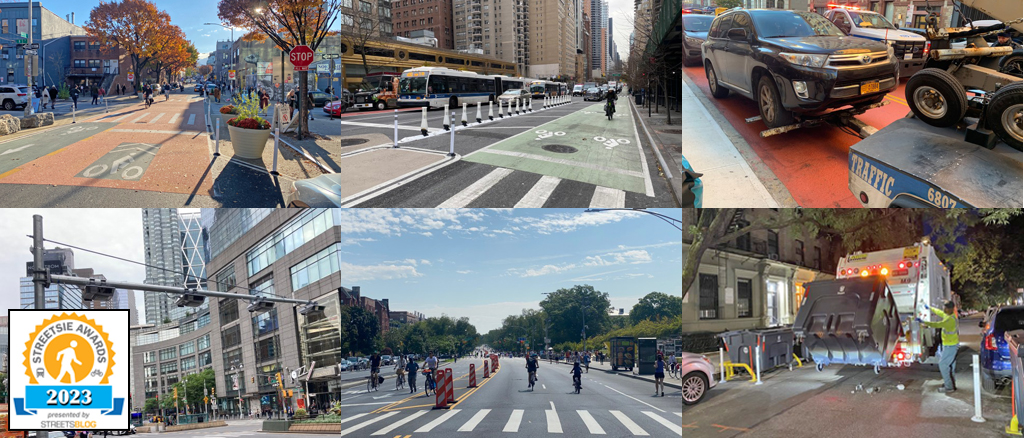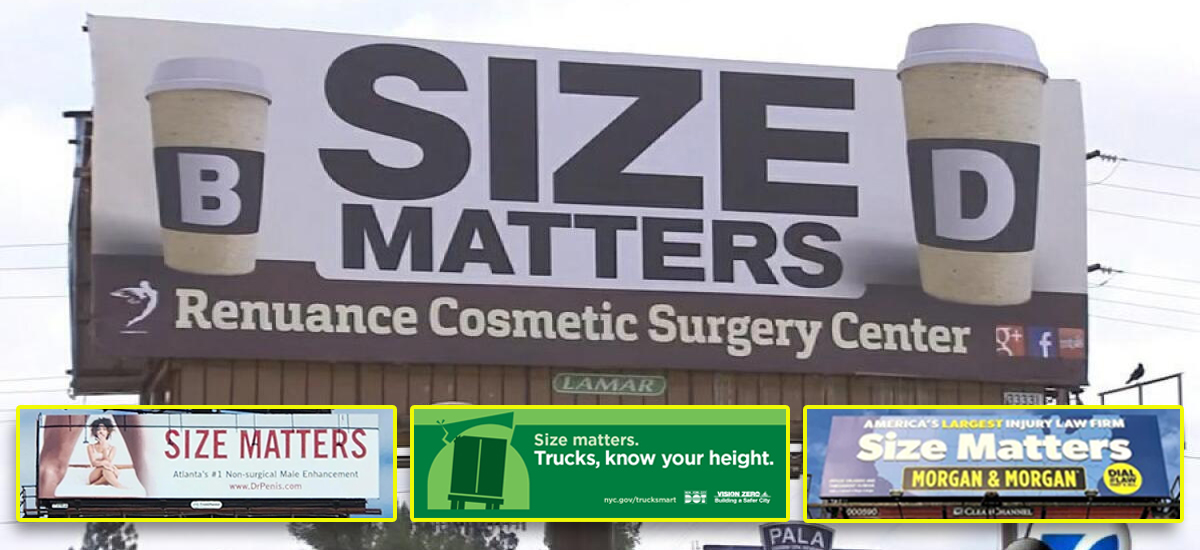This year has seen a raft of promising advances for the livable streets movement, even if we at Streetsblog sometimes tend to focus on the (many) shortcomings.
The smart and creative people at the New York City Department of Transportation and other city and state agencies that impact our streetscape have made several noteworthy strides this year, adding a record amount of bike lanes (though still below the legal requirements of the law) and experimenting with new ways to improve cycling infrastructure.
The Metropolitan Transportation Authority's congestion pricing moved closer to reality, as did the Department of Sanitation efforts to clear sidewalks of mountains of black garbage bags, and the city became the first to guarantee a minimum wage for app-based delivery workers.
So, which achievement was the most important success story of 2023?
The nominees are...:
Extra-wide bike lanes
Cyclists got more space on the road this year, as DOT engineers tried out new extra-wide bike lanes on sections of three avenues in Manhattan.
The bigger green paths that the agency installed on Ninth, 10th, and Third Avenues allow people to ride side-by-side and provide passing space for faster riders, such as the booming number of New Yorkers using e-bikes and other micromobility devices.
The new designs range between nine and 11 feet wide, rather than the six-foot width of typical protected bike lanes in Manhattan, according to DOT. The new paths sometimes had the same overall footprint as older bike lanes, but used up more of the cross-hatched buffer with green paint.

Berry St. bike boulevard
The former Berry Street open street in Williamsburg turned into a permanent bike boulevard this fall, with a range of effective designs to encourage cycling and walking while reducing cars on the nearly mile-long corridor in the north Brooklyn nabe.
The most important change was DOT flipping traffic direction three times on the strip, which discourages drivers from using Berry Street unless it’s for local access.
The agency also created more prominent, coral-shaded intersection markings to indicate to motorists that this is not a regular street, and cleared corners at each intersection of parked cars using bike racks, boulders, and planters — an increasingly popular design known as daylighting.
And don't forget the Banker's Anchor public space nearby at N. 15th Street and Nassau!
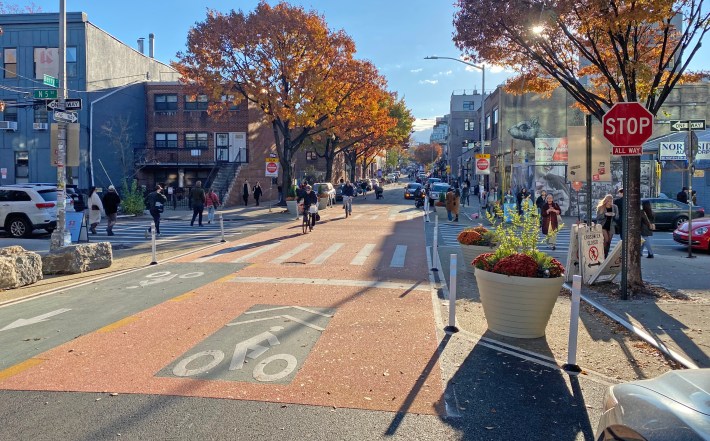
Livingston St. busway
One of Downtown Brooklyn’s illegal parking havens became a little better for transit riders with five blocks of busway the DOT opened on Livingston Street in November.
The road runs right outside the New York City Transit headquarters and has been littered for years with transit workers dumping their personal vehicles in the old red bus lanes, blocking commutes for tens of thousands of riders — a problem so chronic that the NYPD went on a Tow-A-Palooza even after NYC Transit chief Rich Davey sent out a warning to staff to clear out ahead of the busways opening.
DOT turned Livingston Street into a one-way road for private car traffic, while maintaining two-way bus paths, and added concrete boarding islands. Together with last year’s one-way conversion and protected two-way bike lanes on nearby Schermerhorn Street (also a hotspot for placard abuse, but in this case by the NYPD), DOT has reshaped a pair of the most sclerotic streets in the borough.
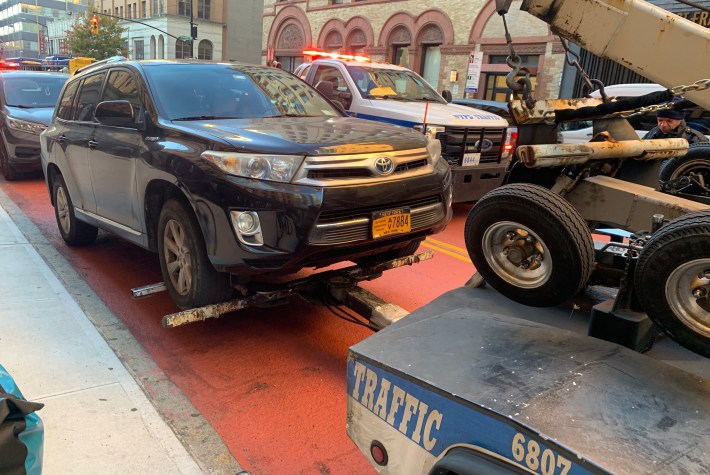
Five-Borough Summer Streets
Mayor Adams expanded the hugely popular “Summer Streets” program beyond Manhattan for the first time in its 15 year history, opening one car-free street in each of the four other boroughs on select weekends this summer — albeit road blocks still disappeared and reverted to regular traffic early by 1 p.m.
The Bloomberg-era program already extended further uptown last year under Adams, but borough presidents in Brooklyn and Queens repeatedly urged the mayor to go beyond the East River and close sizeable chunks of roads to traffic.
City Hall apparently heeded those calls and brought Summer Streets to premier roadways in the boroughs, including Brooklyn’s Eastern Parkway, the Bronx’s Grand Concourse, Vernon Boulevard in Queens, and Richmond Terrace in Staten Island.
The expansion was long overdue, but the Big Apple still has a long way to go compared to other cities around the globe, such as Bogotá, Colombia, where officials bar cars from nearly 80 miles of roads every Sunday and on holidays from 7 a.m. to 2 p.m.
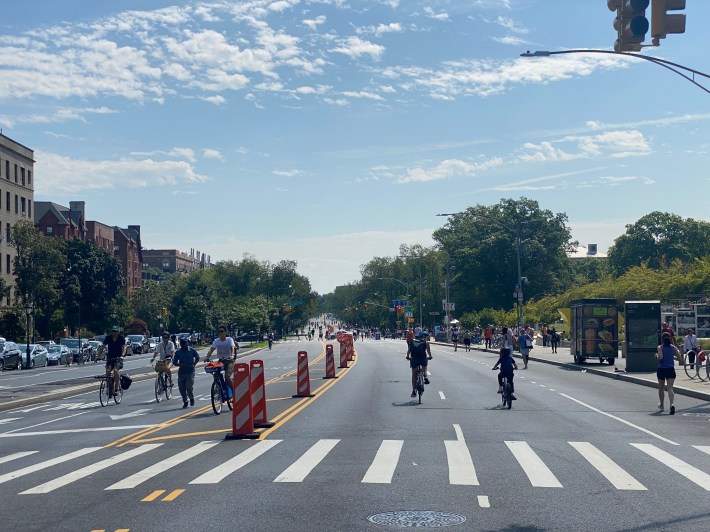
Congestion pricing advances
Fifteen dollars. That’s what transit officials plan to charge drivers to enter Manhattan below 60th Street for the nation’s first congestion pricing plan that is slated to kick in late spring or early summer of 2024.
Longtime advocates and experts lauded the impending charge, which will be higher for trucks, drops 75 percent overnight, adds per-trip fees for yellow cabs and for-hire vehicles, and could increase on gridlock alert days.
However, the proposal’s critics have also started rolling out the lawsuits, including among them the state of New Jersey and a holiday songwriter.
Gov. Hochul has stood steadfastly by the MTA proposal, over which she had predominant control, while Mayor Adams has been wishy-washy, trying to get in more exemptions for cabs and school buses at the 11th hour.
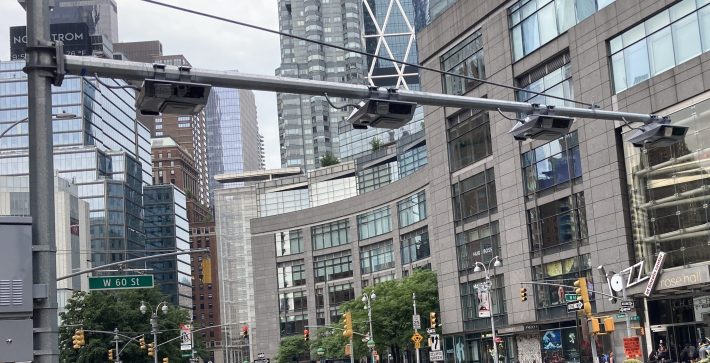
Minimum wage for Deliveristas
The city’s roughly 60,000 app-based delivery workers finally notched a minimum wage of $17.96 this summer, which will rise to $19.96 by April 2025 — the first such policy in the country, that followed three years of the mostly-immigrant workforce banding together for better pay and protections under the name Los Deliveristas Unidos.
App companies like Uber, DoorDash, GrubHub, and Relay fought hard against the labor gains for months with legal challenges, but a state appellate court earlier this month upheld the city’s law, allowing the pay minimum to finally take effect.
The tech giants have found other ways to still make life harder for their workforce by making it more difficult to tip delivery workers and adding a New York City-specific fee to orders, which advocates have called out as retaliation for the base wage law.
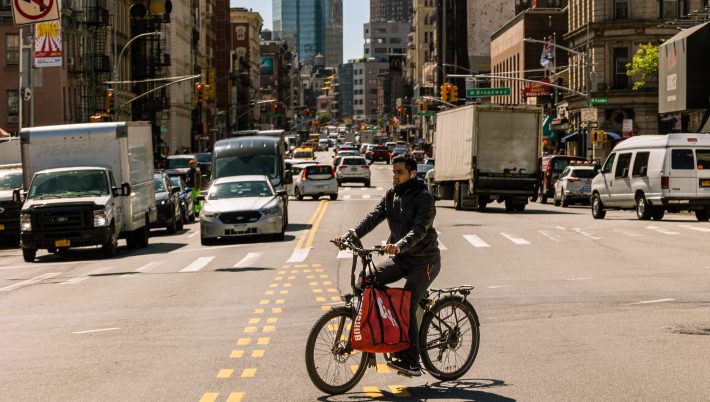
Trash containerization
The Department of Sanitation launched promising efforts to box up the city’s notorious 5 o’clock shadow of trash mountains that line the streets several evenings a week.
The city could rid virtually all its pedestrian space of the stinky and rat-attracting bags by repurposing a historic 150,000 parking spaces for trash containers — a mere 5 percent of the city’s roughly 3 million curbside spots, according to a DSNY report published in the spring.
New York’s Strongest rolled out a pilot program to pick up trash from bins along the curb using mechanized lifts on Sanitation trucks along 10 residential blocks in West Harlem in September.
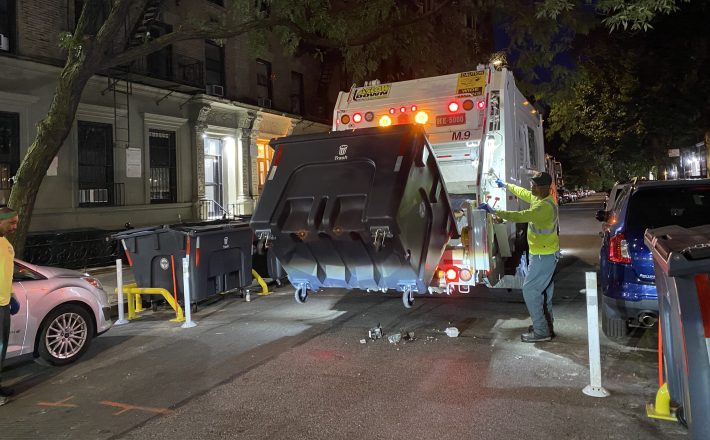
Businesses and smaller building residents citywide also have to start using bins instead of bags under recent DSNY rule changes — however those containers will still be allowed to crowd the sidewalk.
Those are the nominees — so now it's time to vote (if you don’t see a ballot below, refresh the page):
